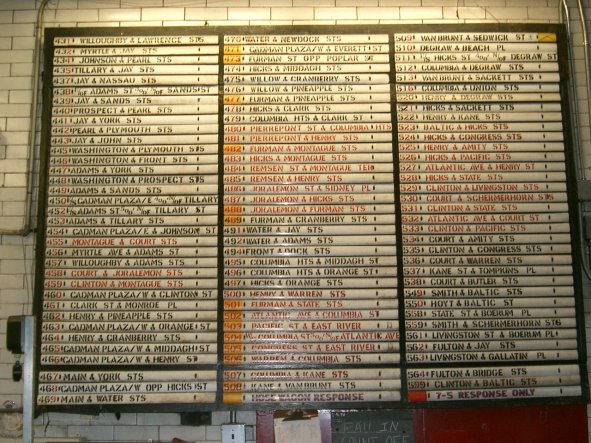- Joined
- Feb 3, 2008
- Messages
- 317
What year did the teleprinters come out into the FDNY? What about the MDT's? Was it always Starfire?
68jk09 said:Frank ...in regards to your post about re-setting the mdt ......if a Unit has to re-set the mdt to get a run why did they not get it in the first place ?.....a Unit should not have to drive down the street re-setting the mdt every few blocks.........on the mdt subject...how many times is a Unit told that their mdt shows off.....i never knew anybody who shut their mdt off....not breaking your shoes....just thought you may have some insight on this.
A small beat up clipboard with a supply of cut to size slips of scrap paper and a pencil sharpened with a knife, bolted to the dash of a Mack CF ... Slips are transferred to the officer's tie clip as they accumulate. Crude but effective!!!FD347 said:In the meanwhile, I suggest going back to basics for a backup: mount a sheet of plexiglass on the dashboard and keep a China marker handy so you can write down the runs on the fly.
That's a bit of the job that'll never fade away. Tried and true, worked for years and should have been patented! ;D69 METS said:A small beat up clipboard with a supply of cut to size slips of scrap paper and a pencil sharpened with a knife, bolted to the dash of a Mack CF ... Slips are transferred to the officer's tie clip as they accumulate. Crude but effective!!!FD347 said:In the meanwhile, I suggest going back to basics for a backup: mount a sheet of plexiglass on the dashboard and keep a China marker handy so you can write down the runs on the fly.
68jk09 said:The original teleprinters were not touch screen ...they had round buttons for the different signals.....also they did not announce ENG LAD BN like today....there was no tone at all just a buzzing sound as the carrier moved across the page.....Companies soon developed a variety of devices (usually a microswitch) to sound an alarm when the printer went off.....these devices were forbidden by the Job so they had to be easily removable if the machine broke....this never made sense....it took many years for the Job to integrate an audible alarm into the system.
Disp51 said:The dispatcher would send the signal twice, with the primary bell (brass), and the secondary bell (steel) so it would be two distinctive sounds. In addition, smaller steel bells would be placed throughout quarters, which would sound during both transmissions. Everyone would count the incoming alarms, and most could tell which boxes were to be run from memory, plus there was always a large board with the first due assignments either in the kitchen and/or sitting room . Also, at the bottom of the telegraph bells at the housewatch was a button to sound the bells throughout the house. This was used at night to supplement the lights to turn out the members, and also to call the members down for meal, chief's visit, etc.
At the borough CO's, the bells would be restricted to the first and second alarm companies late night unless fire conditions were too busy.

